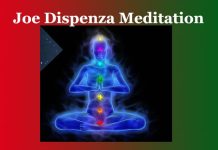Courses and Curricula in the Madaris
Courses and Curricula in the Madaris and Diyarul Uloom in Assam
Courses and Curricula in the Madaris and Diyarul Uloom in Assam
Madaris (Madrasa) and Diyarul Uloom have been the most prominent institutions of religious learning. Since the rule of the British in India many big Islamic institutions like Madaris and Diyarul Uloom had been formed in the country. Assam was not opposed to it and during the twentieth and twenty-first centuries, a large number of Madaris and Diyarul Uloom have been established. Some of them are established and managed by the people and some of them are established solely by the government.
The Madaris managed by the government of Assam are Pre-senior Madrassas, Senior Madrassas, Title Madrassas and Arabic Colleges. The numbers of these are as follows-
Provincilized Senior Madrassas, Title Madrassas and Arabic Colleges are 74 in number.
Non-Provincilized Pre Senior Madrassas=527,
Senior Madrassas = 100
Title Madrassas = 8
Arabic College = 01
On the other hand, the non-government institutions managed by the people are Diyarul Uloom, Madarisul Banat, Madarisul Hifz etc. Some of them are governed by the Tanjimul Madarisul Qaumiya Board, (Nil Bagan, Hojai) and others are individuals without being governed by any board.
There are about five thousand institutions in Assam. Outside the board, about seven hundred Madrassas have been being managed by the people. The Course and Curricula of these non-governmental institutions are going to be discussed in brief as under-
Diyarul Uloom = 241
Madarisul Banat = 75
Madarisul Hafiz = 388
DIYARUL ULOOM (HOUSE OF KNOWLEDGE): The term ‘Diyarul’ has been derived from the plural form of the Arabic word ‘Darul’ the meaning of which is ‘house’ or ‘building’. The plural form of ‘Ilmun’ is ‘Uloom’ the meaning of which is ‘Knowledge’. Diyarul Ulooms are the main centre points of Islamic education. These institutions are established and governed by the people. Some Diyarul Ulooms are established in some districts of Assam as in Barpeta, Nagaon, Cacher, Dhubri, Karimganj, Bongaigaon, Goalpara etc. during the ruling period of the British. Nowadays in every district there have been established various Diyarul Uloom where Muslims are in lead. Some famous Diyarul Ulooms are as follows-
Darul Uloom (Joynagar, Hojai); Darul Uloom (Jalaliya, Hojai, Nagaon); Darul Uloom (Bashkandhi, Cachar); Darul Uloom (Gobindapur, Cachar); Darul Uloom, (Barbala, Barpeta; Darul Uloom, (Kharichala, Barpeta); Aljamiya-E- Salafiya, (Itervita, Barpeta), Kajaikata Hussainiya Madrassa (Chapar, Dhubri); Title Madrassa (Dhubri), Darul Uloom, Garigaon (Kamrup), Baghbari Madrassa,(Karimganja) etc. In these Madrassas, the Koran, Hadith, Fiqua, Akaid, Arabic Grammar etc. are taught. In some Madrassas, the books prescribed by the SEBA are also taught. For example, we can cite the courses and Curricula of those Madrassas below:
There are three branches of learning as- (1) Maulana Branch, (2) Hafijiya Branch and (3) English Speaking and Computer Course in non-governmental Islamic institutions.
At first, the Maulana Branch is going to be discussed below;
The 1st Class: MAKTABI- AWWAL: In this class, these courses are taught as (i) Muwallimul Quran, (ii) Urdu Pehli, (iii) Urdu Kaidah, (iv) Adiyatu-al-Mashura, (v) Masnun Duai, (vi) English, (vii) Assamese and (viii) Khush Khatt (Good Hand Writing Practice).
2nd Class: MAKTABI DAUM: (I) Talimul Islam Dawam (ii) Quran Sharif Reading (iii) English (iv) Mathematics, (v) Iqra Urdu and (vi) Khush Khatt.
3rd Class- MAKTABI SAWAM: (i) Talimul Islam, (ii) Quran Reading, (iii) English, (iv) Assamese, (v) Mathematics, (vi) Iqra Udru, (vii) Khus Khatt, (viii) Tarikh (First Part), (ix) Environmental Studies etc.
4th Class- FARSI PEHLI: (i) Tariqul Islam, (ii) Gulastan Bustan, (iii) Iqra Urdu (Fourth and Fifth Part) (iv) Qirat Mashq, (v) English, (vi) Shams, (vii) Assamese, (viii) Pharsi ki Paheli and (ix) Khus Khatt.
5th Class: AARABI- AWWAL: (i) Panjeganj, (ii) Sharahmiyati Amil, (iii) Shiratun Nawbabi, (iv) Alkiratul Washiya and (v) Reading of the Holy Quran.
6th Class AARABIA DAUM: (I) Al Kiratul Wajhiya (Part II), (ii) Nafhatul Adab, (iii) Hidayatul Nahu, (iv) Asan Muntiq (Philosophy), (v) Mir Kat (Philosophical Book), (vi) Nurul Iza, (vii) Ilmu Siga, (viii) Kuduri (full), (ix) Khashiyati Abuwab, (x) Nurul Iza, (xi) Ilmu Siga (xii) Khashiyati Abuwab, (xii) Reading of the Holy Quran.
7th Class AARABI SHAHRAM: (I) Sharhi Wakiya, (ii) Durul Balagat, (iii) Qudhuri, (iv) Kafiya, (v) Nafhatul Adab, (vi) Mishkatul Akherain, (vii) The Holy Quran Translation (last Five Para), (viii) Talimul Muwallim (ix) English (x) Khilaphaee Rashedin etc.
8th Class AARABI SHAHAREM: (i) Sharhi Wakiya, (ii) Ushule Shashi, (iii) Durusul Balagat, (iv) Kuduri, (v) Ashiyatul Hadith, (vi) Tafsirul Ushul etc.
9th Class- AARABI PANJAM: (i) Mukamat Al Hariri, (ii) Hedaya Awwal, (iii) Nurul Anuwar, (iv) Shullamil Uloom, (v) Quran Transalation, (vi) Mukhtarisul Mani, (vii) Meiftahul Tariq (viii) Manarul Anuwar,
10th AARABI SASHAM: Tafshir al Jalalain Part I & II (ii) Hedaya Part II ( Islamic Jurisprudence), (iii) Hisami, (iv) Mirji, (v) Al Faujul Kabir fi Usul al Tafshir (vi) Mabadiul Phalsafa (vii) Dewan al Mutanabbi, (viii) Dewan al Hamasa.
11th AARABI SAPTAM: (i) Mishkatul Masabih, Part I & II, (ii) Hedaya Part III & IV, (iii) Sharhi Aqaid, (iv) Nukhbatul Fikir, (v) Siraji, (vi) Mukaddamatul Mishkat al Mashabih, (vii) Tarikhul Majahirul Islam.
12th Class: DAURA HADITH: Shahih al Bukhari, (ii) Jamiya –al Tirmiji, (iii) Sunani Abu Daud, (iv) Muwatta Imam Malik, (v) Tahawi, (vi) Sunani Nasai, (vii) Sahih Muslim, (viii) Muta-e- Muhammad, (ix) Sunane Ibne Majah.
MADARISUL BANAT: Banat is the plural form of ‘Bintun’ means ‘girl’ and ‘Madrassa’ means ‘school’. Madrassatul Banat is the most prominent institution of religious education for Muslim women. In Assam, some Madrasatul Banats are established during the twentieth century. But a large number of Banat Madrassas are established in the twenty-first century in every district of Assam where Muslims are in lead. In every Madrassa, there are attached hostels. Some students live in the hostels and some students are day students. Some prominent Madrassatul Banats are as follows:
Jamiyatul Banat, Balapara (Barpeta); Al Jamiyatul Islamiya, Balargodam (Dhubri); Khanua Banat Madrassa (Mangaldoi); Banat Madrassa (Dharang); Joynagar Banat Madrassa (Hojai), Sheik Ahamed Ali® Madrassatul Banat (Kayakuchi, Barpeta); Madrastul Muminat (Kayakuchi; Kalgachiya, Kharichala in Barpeta District); Khandakarpara Banat Madrassa,(Barpeta) etc.
Courses and Curricula of Banat Madrassas approved by Tanjim Madrassa Qaumiya, Nilbagan, Hojai as follows:
MADRASSATUL HIFZ: Madrassatul Hifzs are also prominent institutions of religious education for Muslims. These Madaris are established and governed by the people. Some Hafijiya Madrassas are attached to Diyarul Uloom and a large number of Madrasatul Hifzs are separately established. These Madaris are also established in the twentieth century but a large number of Madaris are established in the twenty-first century to meet the necessity of people. With the increase in the population, the necessity of religious education has also increased. Consequently, many Madarisul Hifzs are set up. These types of Madaris are established for boys and girls separately. Madarisul Hifzs for boys are many in number. But the Madarisul Hifzs for girls are fewer in number. Some famous Madarisul Hifzs are as follows;
Madarisul Hifzs, Jalaliya (attached to Darul Uloom); Madrasatul Hifzs, Joynagar (attached); Garigaon (Kamrup) attached; Miftahul Quran (Kalgachiya); Hussainya Hafijiya Madrassa; Madrasatul Hafijiya (Barpeta); Mandiya Hafijiya Madrassa, (Barpeta); Lakhipur Tahfizul Quran; Hifz Branch Darul Yatima Goalpara; Darul Yatima, Gauhati. 0 0 0.
Courses and Curricula in the Madaris
N. B. This article ‘Courses and Curricula in the Madaris and Diyarul Uloom in Assam’ originally belongs to the book entitled ‘Gleaned Essays‘ by Menonimus. Courses and Curricula in the Madaris
Courses and Curricula in the Madaris
Books of Composition by M. Menonimus:
- Advertisement Writing
- Amplification Writing
- Note Making
- Paragraph Writing
- Notice Writing
- Passage Comprehension
- The Art of Poster Writing
- The Art of Letter Writing
- Report Writing
- Story Writing
- Substance Writing
- School Essays Part-I
- School Essays Part-II
- School English Grammar Part-I
- School English Grammar Part-II..
Books of S. Story by M. Menonimus:
Related Search:











